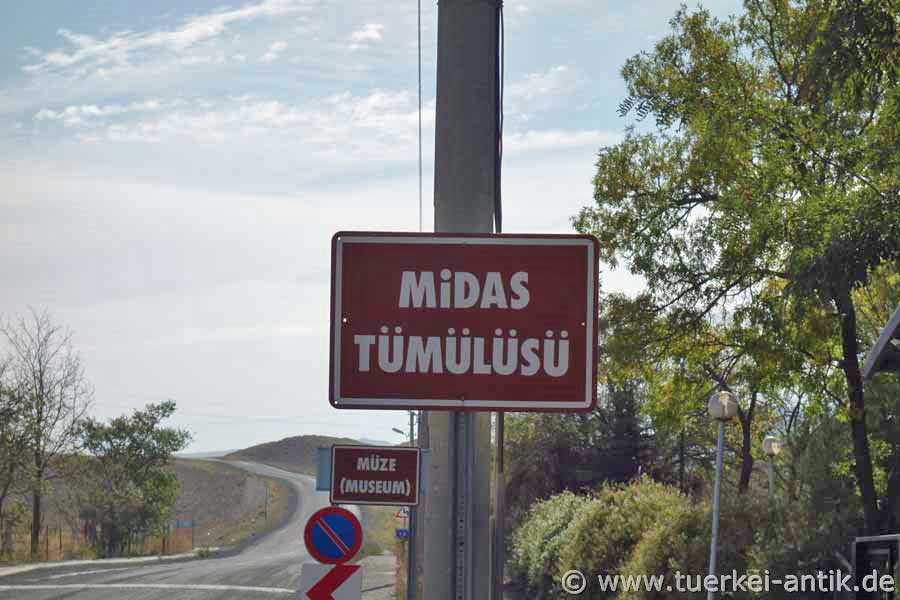 |
| Gordion | |||
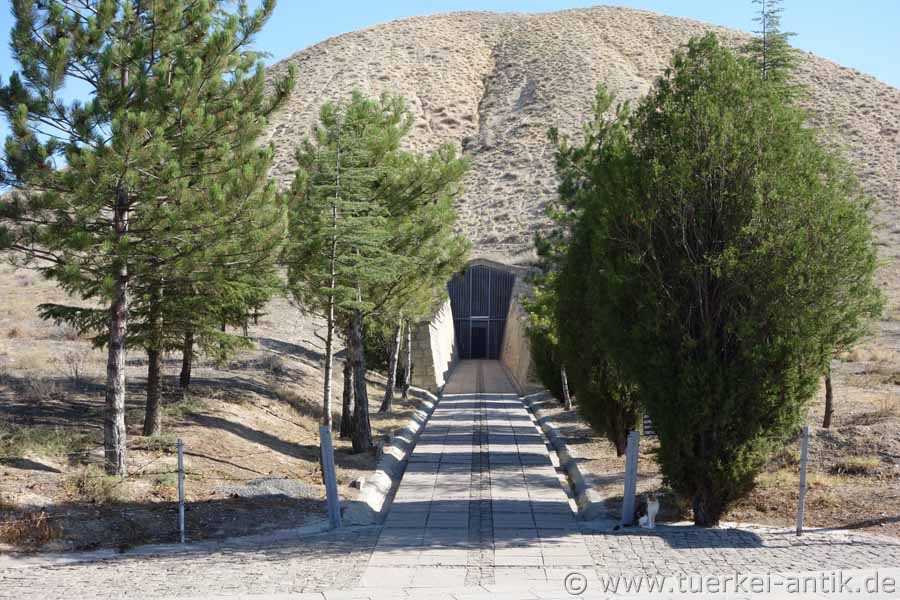 |
|
||
| The entrance to the large tumulus | |||
|
Gordion was the capital of the Phrygian Empire and was rediscovered in 1895 by the brothers Gustav and Alfred Körte. In 1900 the first excavations were carried out on the settlement hill and some tumulus graves were explored in the surrounding area.
In the surroundings of Gordion there are over 100 tumuli, burial mounds with bodily burials. Some of them have large dimensions and very rich grave goods. |
|||
|
|
|||
| The large tumulus is still called "Midas Tumulus" | |||
|
In the largest of these tumuli, which also had by far the most burial objects, archaeologists found the skeleton of a 60- to 70-year-old man. |
|||
|
|
|||
| A long fortified passage leads to the burial chamber in the middle of the tumulus. | |||
|
Newest investigations suggest however a somewhat older date of the grave. The felling date of a juniper tribe used to build the tomb was 740 B.C. +7/-3 years. Presumably it is rather the grave of his predecessor who was named Gordios according to Greek tradition. |
|||
|
|
|||
| The burial chamber | |||
|
|
|||
|
Table from the burial chamber of the Great Tumulus, 8th century BC (exhibited in the Museum of Anatolian Civilizations in Ankara) |
|||
|
|
|||
|
Bench from the burial chamber of the Great Tumulus, 8th century BC (exhibited in the Museum of Anatolian Civilizations in Ankara) |
|||
|
Gordion City |
 |
||
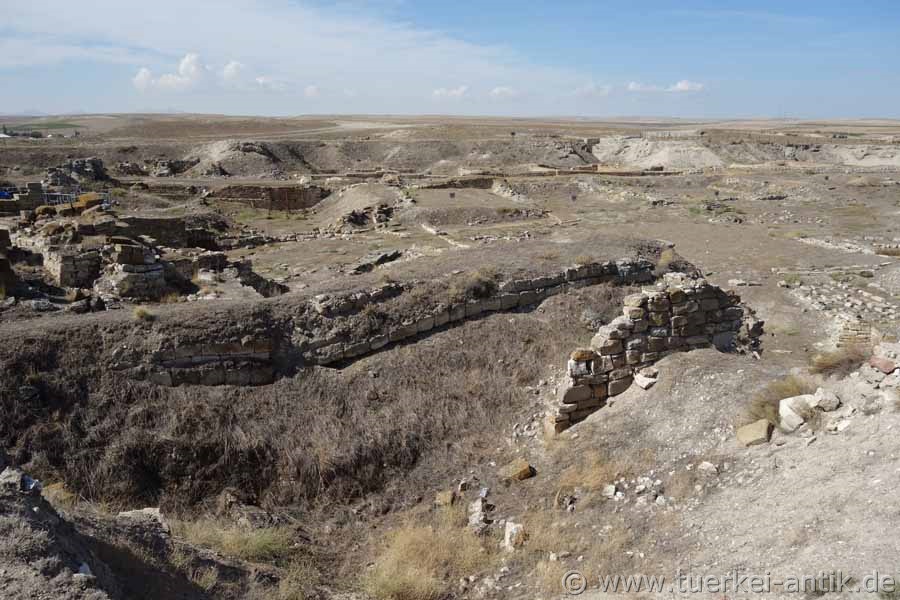 |
|||
| Excavations in the city of Gordion | |||
|
|
|||
|
Since 1950, the site of the old town has been systematically excavated under the direction of archaeologists from the University of Pennsylvania. |
|||
|
|
|||
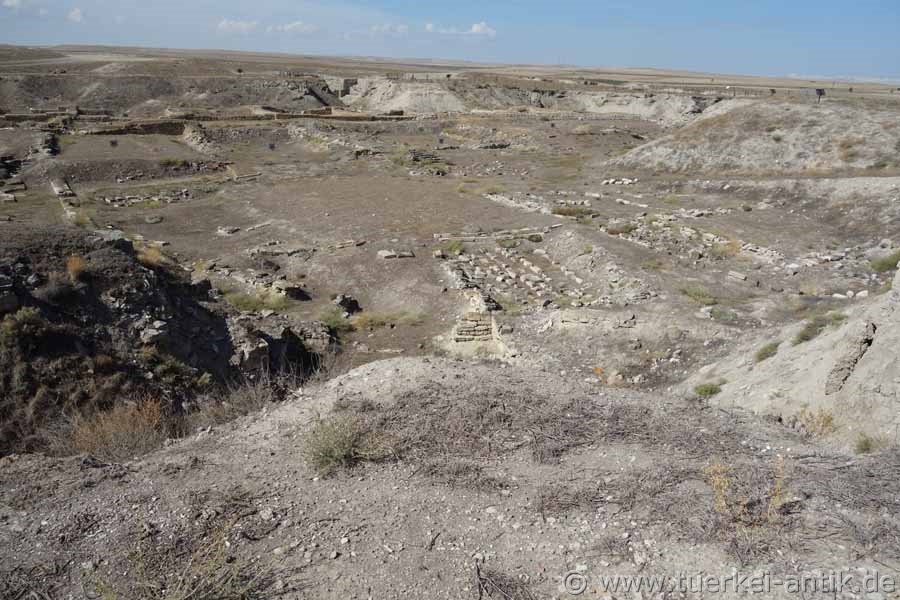 |
|||
| The settlement hill | |||
|
|
|||
|
The hill was inhabited already in the early Bronze Age, as deep excavations have shown. This is followed by Middle and Late Bronze Age layers. During the Late Bronze Age Gordion belonged to the Hittite Empire. Also this period of the settlement history of the hill is only sporadically explored. The finds clearly have a Hittite character. At the beginning of the 12th century BC Gordion was apparently abandoned. |
|||
|
|
|||
|
|
|||
|
Excavations and reconstructions in areas of the early settlement phase |
|||
|
Probably relatively soon and still in the 12th century B.C. a repopulation by new population took place, whose pottery shows partial parallels to the pottery of the simultaneous layer VII b1 (second half 12th century B.C.) of Troy. Several layers of this early Iron Age settlement have been distinguished. This phase then passes without cultural break into the so-called older Phrygian settlement phase. Only these and subsequent phases have been thoroughly investigated so far. In the older Phrygian phase many magnificent buildings were erected in Megaron form. In front of the main room there was a semi-separated antechamber. A "palace" could not be identified, because none of these buildings stands out clearly in its dimensions from the others. Probably all buildings of the settlement hill belonged to the ruling or administrative district. Inside the houses were partly very richly decorated, some demonstrably possessed an upper floor. Walls, whose function has not yet been clarified, ran through the older Phrygian upper town. The Phrygian buildings were mostly constructed in a kind of half-timbered construction: Wooden beams supported stone walls and clay brick attachments. A major project to redesign the upper town was underway when the older Phrygian Gordion was completely destroyed. Assyrian and Greek sources indicate that the Cimmerians were responsible for the destruction of Gordion in 697 or 676 BC. With the conquest of Gordion, the Phrygian Empire also collapsed. |
|||
|
|
|||
| Ausgrabungen und Rekonstruktionen in Bereichen der späteren Siedlungsphase | |||
|
After the destruction, Gordion's upper town was soon rebuilt.
The destroyed buildings of the older Phrygian phase were artificially covered with a layer of debris up to 10 metres thick, on which the new "Middle Phrygian" Gordion was erected. Its buildings are very similar to those of the older Phrygian phase, in some cases they even have the same orientation.
Since the excavations concentrated for a long time on the investigation of the older settlement phases, the Gordion of the Persian and Hellenistic time is little explored. In recent years, however, a number of Celtic artifacts have come to light that prove that Gordion was inhabited by Galatians in Hellenistic times. |
|||
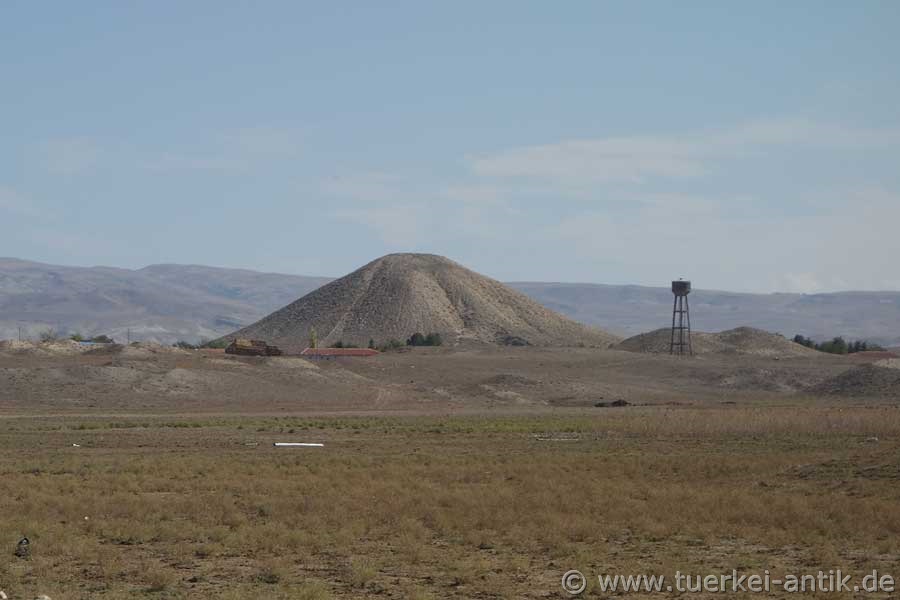 |
|||
| View from the settlement hill to the large tumulus | |||
| Photos: @chim, Monika P. | |||
| Translation aid: www.DeepL.com/Translator | |||
| Source: Wikipedia and others | |||
|
|
|||
